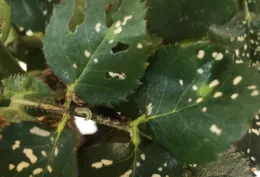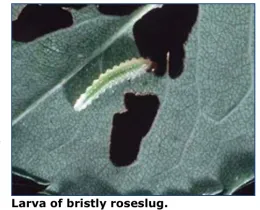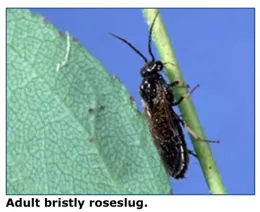
Answer: The insect most likely to cause this damage is a sawfly - this appears to be possibly a Bristly roseslug larvae. It is common to find this critter near the coast as they prefer cooler areas. The larvae is pale green or yellowish green with a brown head. You will find the younger larvae on the underside of the leave chewing leaving a windowpane like damage and the older larvae actually chew holes through the leaves. There may be as many as six generations each year.
When the damage is minor chances are that the natural enemies are doing their job. You can handpick the larvae, spray with water or clip off the infested leaves. However, when there is a large population you may decided to spray with insecticidal soap, neem oil or spinosad. BT is not effective because this larva is not a caterpillar.
This link to UC IPM will describe in detail the information and the control methods. If you choose to use a chemical, please be sure to read and follow the instructions on the label thoroughly.



